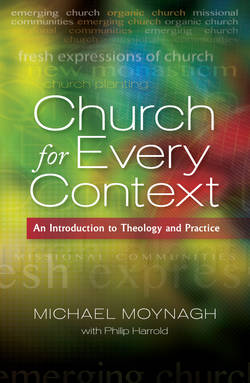Читать книгу Church for Every Context - Michael Moynagh - Страница 84
На сайте Литреса книга снята с продажи.
Adapting to the context
ОглавлениеIn using emergence theory to recount the history of musical theatres in Branson, Missouri, Chiles, Myers and Hench note that key aspects of local culture shaped how the theatres were developed, helping the town to retain its unique character and the theatres to gain support (2004, pp. 512–3). This is a good example of contextualization, which is the second way new contextual churches have sought to adapt to local constraints.
Negotiating these two sites of stability – the church context and the local context – can prove a considerable challenge. Yet a growing number of contextual churches are doing this successfully, despite some of the heartaches involved (see, for instance, www.freshexpressions.org.uk/stories). In so doing, these new communities are finding a place within the values of their sponsoring local church (or group of churches) and through this within the ethos of the denomination.
Some people see this as the inherited church domesticating what is new, blunting the latter’s radical edge (Rollins, 2008, pp. 71–7). Were this to happen, it would represent – in the language of complexity theory – the triumph of the old attractor. Alternatively, the reflexive process of stabilization could allow new expressions of Christian community to find a place within the inherited church – and increasingly change it. A new attractor would then emerge, combining novel and existing forms of church in fruitful relationship.
Stabilization involves
adapting to the tradition, including the denomination;
adapting to the context of the new church.
